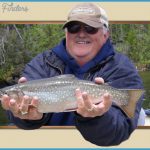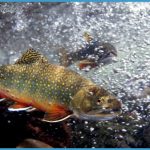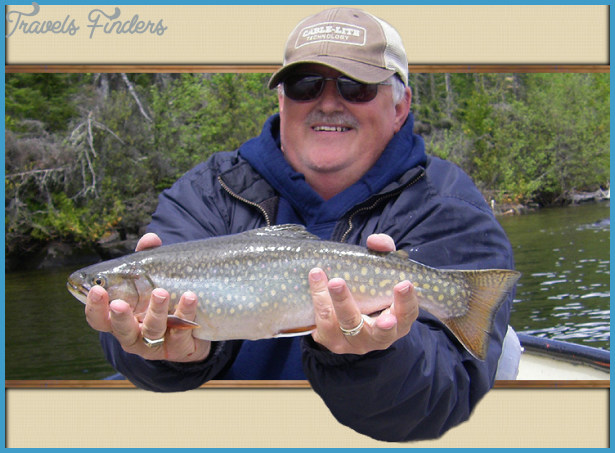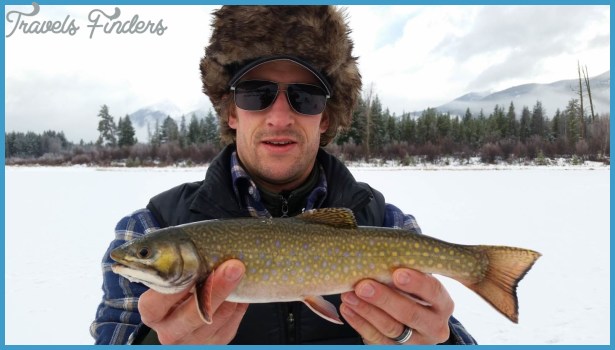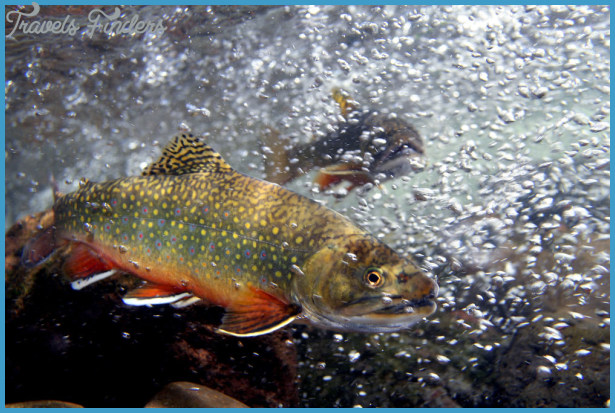Maine has more brook trout waters than any other state. Salvelinus fontinalis, or brook trout, are fish of cold, well-oxygenated waters. Because so much of Maine is rural, and so many lakes, rivers, and streams are in near-pristine condition, Maine represents the last frontier for native brook trout. In all but the southern sections of Maine, most streams and brooks that do not run dry in summer hold populations of native brook trout.
Brook trout vary in size according to the waters in which they live. A mature fish from a large lake may be 18 inches long, while another fish of the same age living in a tiny brook may be only 8 inches long. The largest brook trout taken in Maine weighed 8.5 pounds, but specimens half that size are considered trophies. Many small streams hold populations of stunted trout, with 8-inch fish considered a good size and fish of 12 or more inches giants. The largest brook trout come from lakes and ponds, where 3- and 4-pound fish cruise rocky shorelines in search of minnows. Anglers intent upon taking trophy fish should take notice of those ponds that are strictly regulated as part of the Quality Fishing Initiative, because these will produce the largest brook trout. Check the current Maine open water fishing regulations for the locations of these waters.
Brook trout are dogged battlers. Unlike brown trout or landlocked salmon, brook trout seldom jump, although they do splash on the surface when hooked. Brookies make short but spirited runs and then settle down to slug it out in deep water. Most brook trout spend their entire lives in fresh water but will migrate to salt water if allowed the opportunity. Anadromous or sea-run brook trout usually ascend brooks, rivers, and streams in early spring. In fact, sea-run brook trout provide Maine’s earliest open water fishing.
Streams and rivers that are not dammed usually host runs of anadromous brookies. Even the tiniest brooks, the kind that all but dry up in summer, will see a run of brilliantly colored brook trout in early- to mid-April.
Fishing these tiny brooks is sometimes difficult. Alders and raspberry bushes line the banks and casting is almost impossible. Although sea-run brook trout will hit flies and other artificials, the easiest way to go about it is to use an ultralight spinning outfit and worms as bait.
These little trout can be skittery to the extreme, so the brook fisher must sometimes creep about on hands and knees in order to prevent a shadow from spooking the fish. Sometimes the only way to get a bait into a pool is to stick your rod through an opening in the bushes and drop your line straight down. Even if you do hook a fish, it can be difficult to guide it through the ever-present tangle of the brush and limbs.
Sometimes patches of snow still spot the ground in the shady glen where the little sea-run brookies are found. The author has kept his catch fresh by placing a few handfuls of granular snow in his creel and placing the just-caught fish on ice. Fishing for Maine sea-run brook trout in April presents some interesting paradoxes. Where else can you catch brook trout while standing in the snow, within earshot of the surf? Sea-run brook trout can be found in rivers that also hold Atlantic salmon smolt. Because newly arrived sea-run brookies are iridescent, they are sometimes mistaken for salmon smolt. If you are not sure what you have caught, remember that all brook trout have vermiculations on the back and all brook trout have a square tail. Salmon have a forked tail and no vermiculations.


